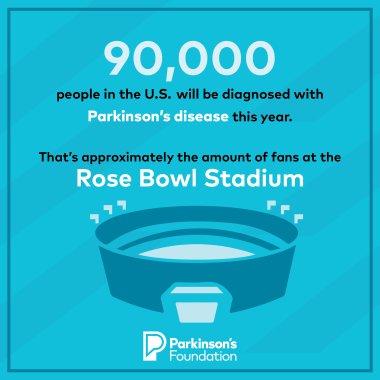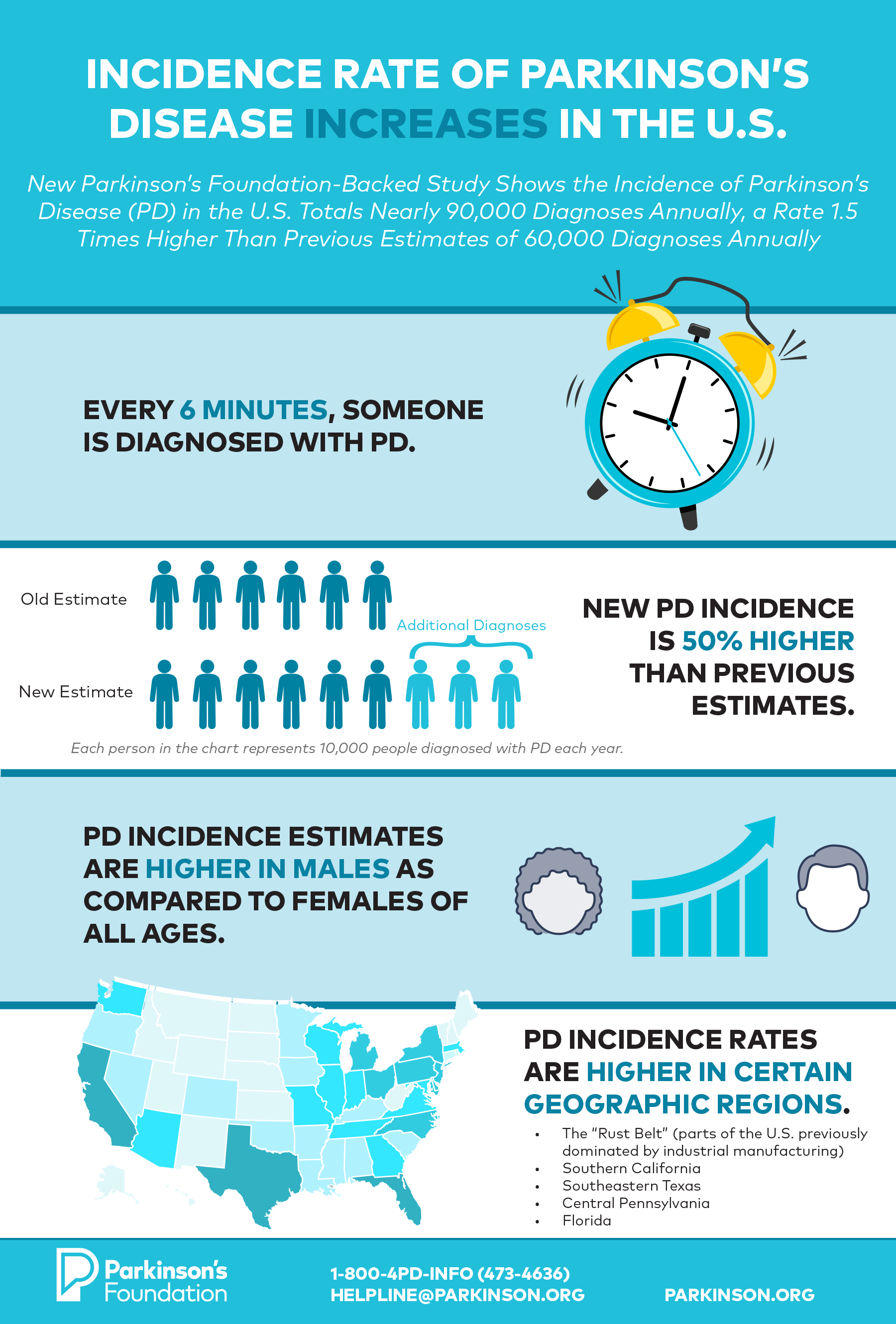Number of People Diagnosed with Parkinson’s Increases to Nearly 90,000 Each Year
A new study estimates that nearly 90,000 people in the U.S. are diagnosed with Parkinson’s disease (PD) each year. This represents a steep 50% increase from the previous estimate of 60,000 diagnosed per year.
Incidence:
A measure of new cases arising in a population over a period of time. Usually measured as the number of people diagnosed per year.

“Unique to this study, we found that PD incidence estimates have varied for many reasons, including how cases are identified and the geographic location of the study,” said Allison Willis, MD, lead author of the study and associate professor of neurology at the Perelman School of Medicine at the University of Pennsylvania. “The persistence of the Parkinson’s disease belt in the U.S. might be due to population, health care or environmental factors. Understanding the source of these variations will be important for health care policy, research and care planning.”
Unlike previous efforts to understand the incidence of PD in the U.S., this study does not rely on the information from just one data set. A strength to this research — and why it is the most comprehensive assessment of Parkinson’s incidence in North America — is that it is based upon five different epidemiological data sets that measure PD and its impact on their population to count the number diagnosed in 2012. The datasets range from local to national-level datasets, including:
- The Honolulu Asia Aging Study in Hawaii
- Kaiser Permanente of Northern California
- Rochester Epidemiology Project in Minnesota
- Ontario Healthcare Administrative Database
- And the U.S. Medicare Database
Why does this matter for the PD community?
Research like this study increases awareness for the critical need for more resources devoted to helping better understand this disease, and how to help those fighting it every day. A clearer understanding of the incidence of PD in the U.S. helps organizations, researchers and care teams adapt to the evolving needs of the PD community and could serve as a framework for a global assessment of the disease.
The Parkinson’s Foundation will utilize this data to help us provide tailored resources, outreach and advocacy to those who need access to resources and information so that they can live better with Parkinson’s.
Furthering Research
Results from the study could help PD scientists better recruit for upcoming research studies and guide what types of individuals to enroll and where they live for these studies. This study may also shed light on Parkinson’s “hot spots” where more resources might be needed — whether it is a registry for researchers to analyze critical data or programs and services to support people and families living with PD.
The study was supported by the Parkinson’s Foundation and The Michael J. Fox Foundation for Parkinson’s Research (MJFF), as well as the Institute for Clinical Evaluative Sciences (ICES). Read the full study at npj Parkinson’s Disease.
This study is the third in a series of public health studies that began with the Parkinson’s Foundation groundbreaking Parkinson’s Prevalence Project that provided the first estimate of PD prevalence (a measurement of all individuals affected by the disease at a given point in time) in nearly 50 years. The study estimated that the number of people living with Parkinson’s is expected to rise to 1.2 million by 2030.
The Prevalence study is well regarded in the PD research community. The study is ranked 1,757 out of 296,521 articles published in the npj Parkinson’s Disease journal, ranking it in the first percentile of tracked articles in the journal.
In addition, a previous study backed by MJFF, the Parkinson’s Foundation, and a handful of partners revealed the economic burden of PD in the U.S. The study showed that PD costs the U.S. $52 billion every year and will cost $80 billion annually by 2037.

Explore the bigger PD picture. Read more about Parkinson’s statistics.
Related Blog Posts

Neuro Talk: Newly Diagnosed

20 Parkinson’s-Friendly Gifts
